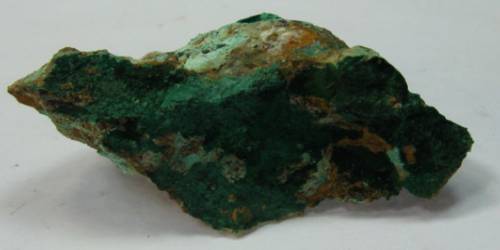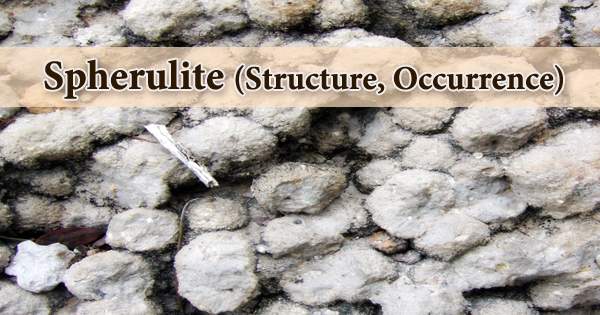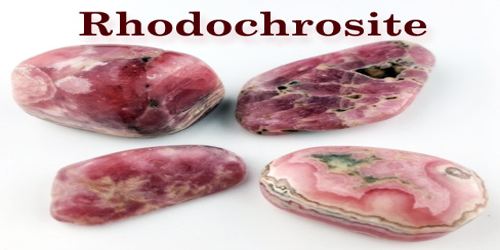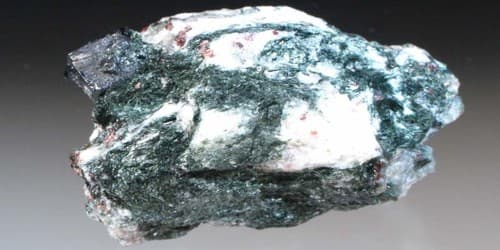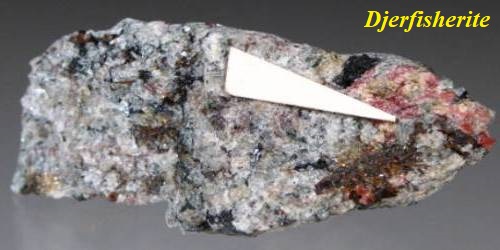Cornubite is a rare secondary copper arsenate mineral with formula: Cu5(AsO4)2(OH)4. It is a mineral containing arsenic, copper, hydrogen, and oxygen. These crystals are very rare, are tabular, often in aggregates as rosettes. Cornubite is generally fibrous, botryoidal, globular or massive.
It was first described for its discovery in 1958 in Wheal Carpenter, Gwinear, Cornwall, England, UK. The name is from Cornubia, the medieval Latin name for Cornwall. It is a dimorph of Cornwallite and the arsenic analogue of pseudomalachite.
General Information
- Category: Arsenateminerals
- Formula: Cu5(AsO4)2(OH)4
- Crystal system: Triclinic
- Crystal class: Pinacoidal (1) (same H-M symbol)

Properties
Cornubite is fairly soft, with hardness 4, the same as fluorite, and specific gravity 4.64, which is similar to another copper arsenate, clinoclase, at 4.38, but much denser than quartz, at 2.66.
- Color: Light or dark green
- Crystal habit: Fibrous, botryoidal, globular or massive, also rare tabular crystals
- Mohs scale hardness: 4
- Luster: Vitreous
- Streak: Light green
- Specific gravity: 4.64
Optical properties
All triclinic minerals are biaxial; cornubite is biaxial (-). Its refractive indices are quite high, close to 1.9, similar to zircon and garnet. It is green, as are many copper minerals, usually translucent, with a vitreous luster and a light green streak.
Occurrence
Cornubite occurs there as light green botryoidal crusts on rhyolite or as balls and crusts on cornwallite, also as coatings on clinoclase and pseudomorphs after parnauite. Other associations are with chalcophyllite, chenevixite, pseudomalachite, bayldonite, tyrolite, azurite, and chrysocolla.
Information Source:
